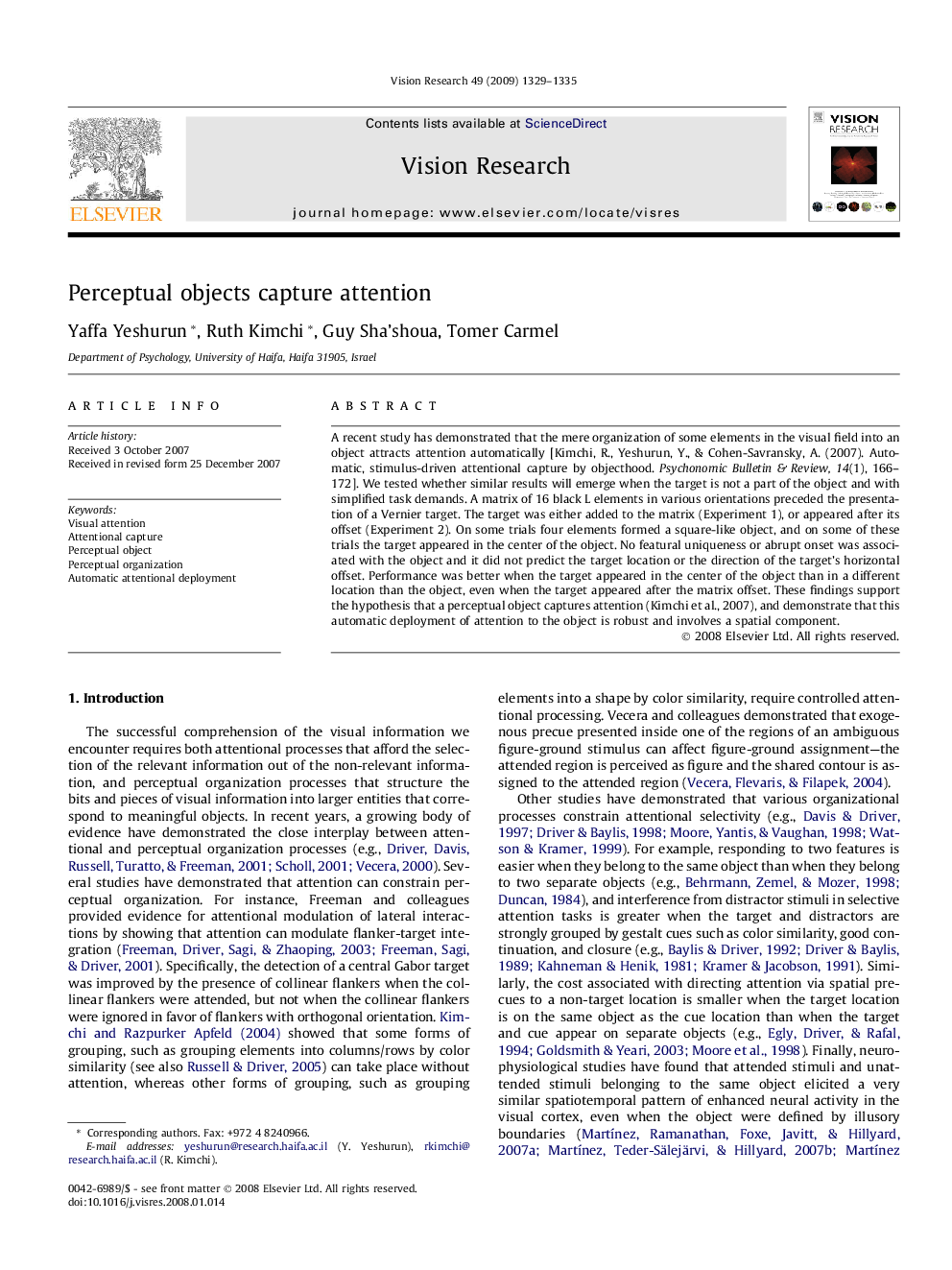| Article ID | Journal | Published Year | Pages | File Type |
|---|---|---|---|---|
| 6203895 | Vision Research | 2009 | 7 Pages |
A recent study has demonstrated that the mere organization of some elements in the visual field into an object attracts attention automatically [Kimchi, R., Yeshurun, Y., & Cohen-Savransky, A. (2007). Automatic, stimulus-driven attentional capture by objecthood. Psychonomic Bulletin & Review, 14(1), 166-172]. We tested whether similar results will emerge when the target is not a part of the object and with simplified task demands. A matrix of 16 black L elements in various orientations preceded the presentation of a Vernier target. The target was either added to the matrix (Experiment 1), or appeared after its offset (Experiment 2). On some trials four elements formed a square-like object, and on some of these trials the target appeared in the center of the object. No featural uniqueness or abrupt onset was associated with the object and it did not predict the target location or the direction of the target's horizontal offset. Performance was better when the target appeared in the center of the object than in a different location than the object, even when the target appeared after the matrix offset. These findings support the hypothesis that a perceptual object captures attention (Kimchi et al., 2007), and demonstrate that this automatic deployment of attention to the object is robust and involves a spatial component.
